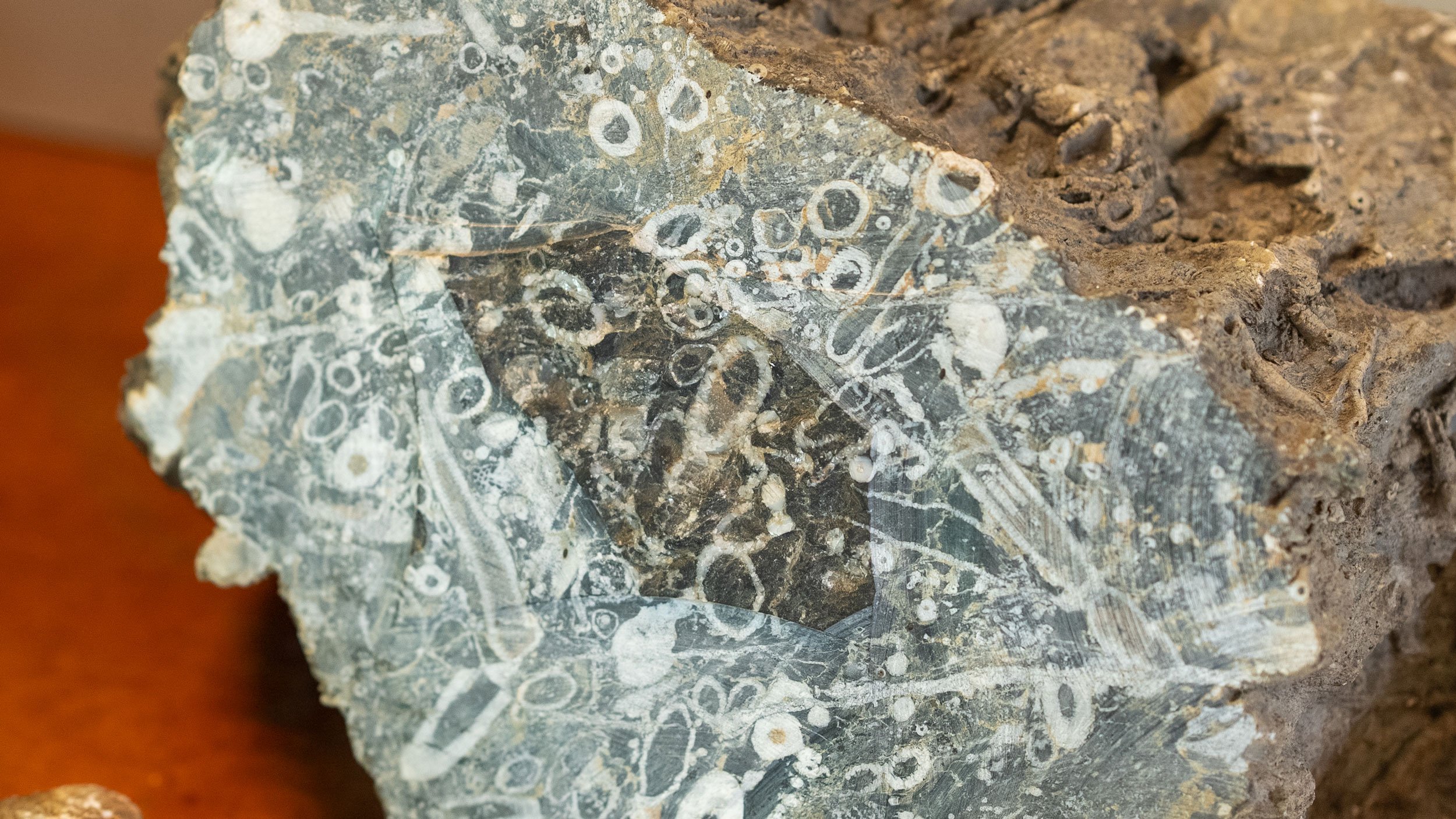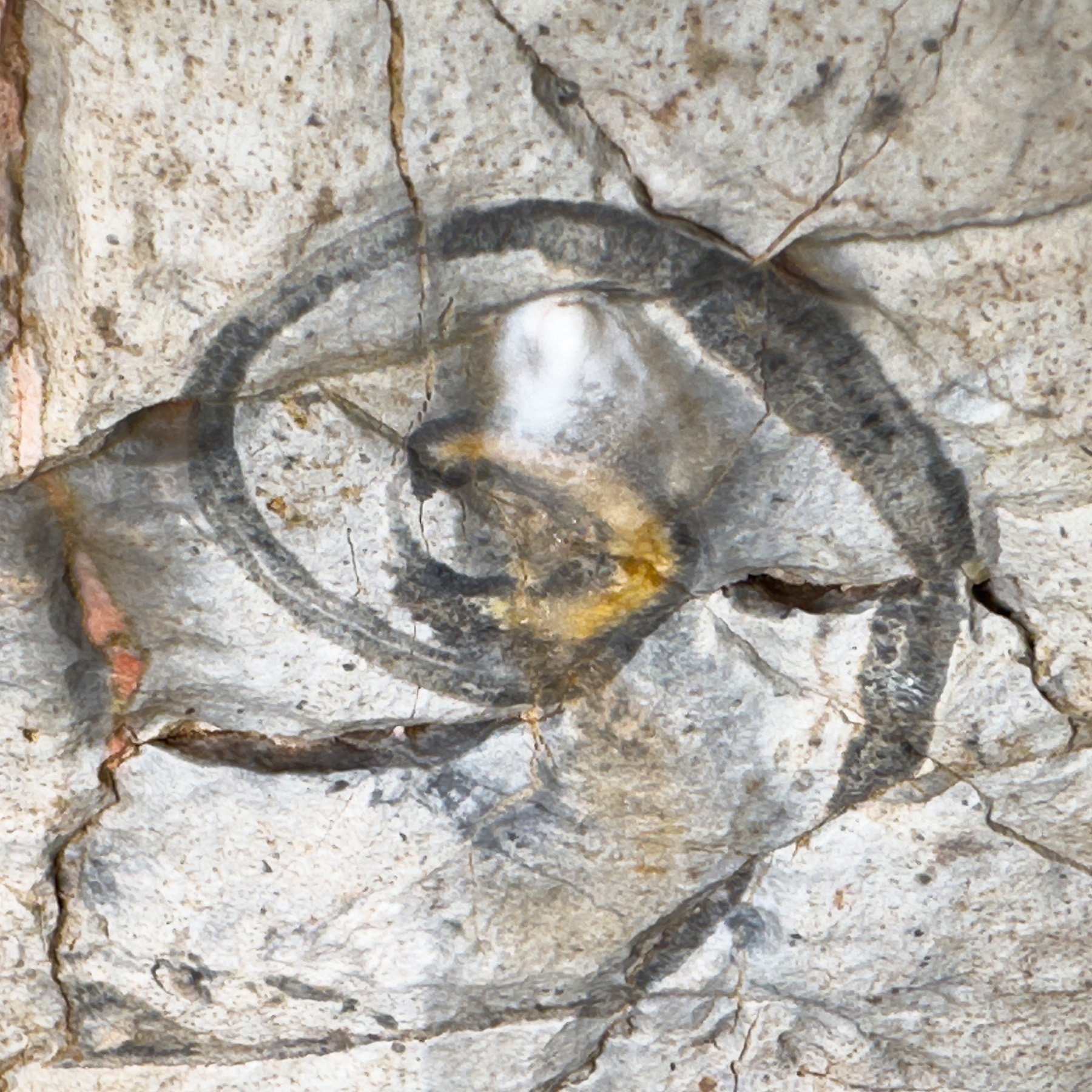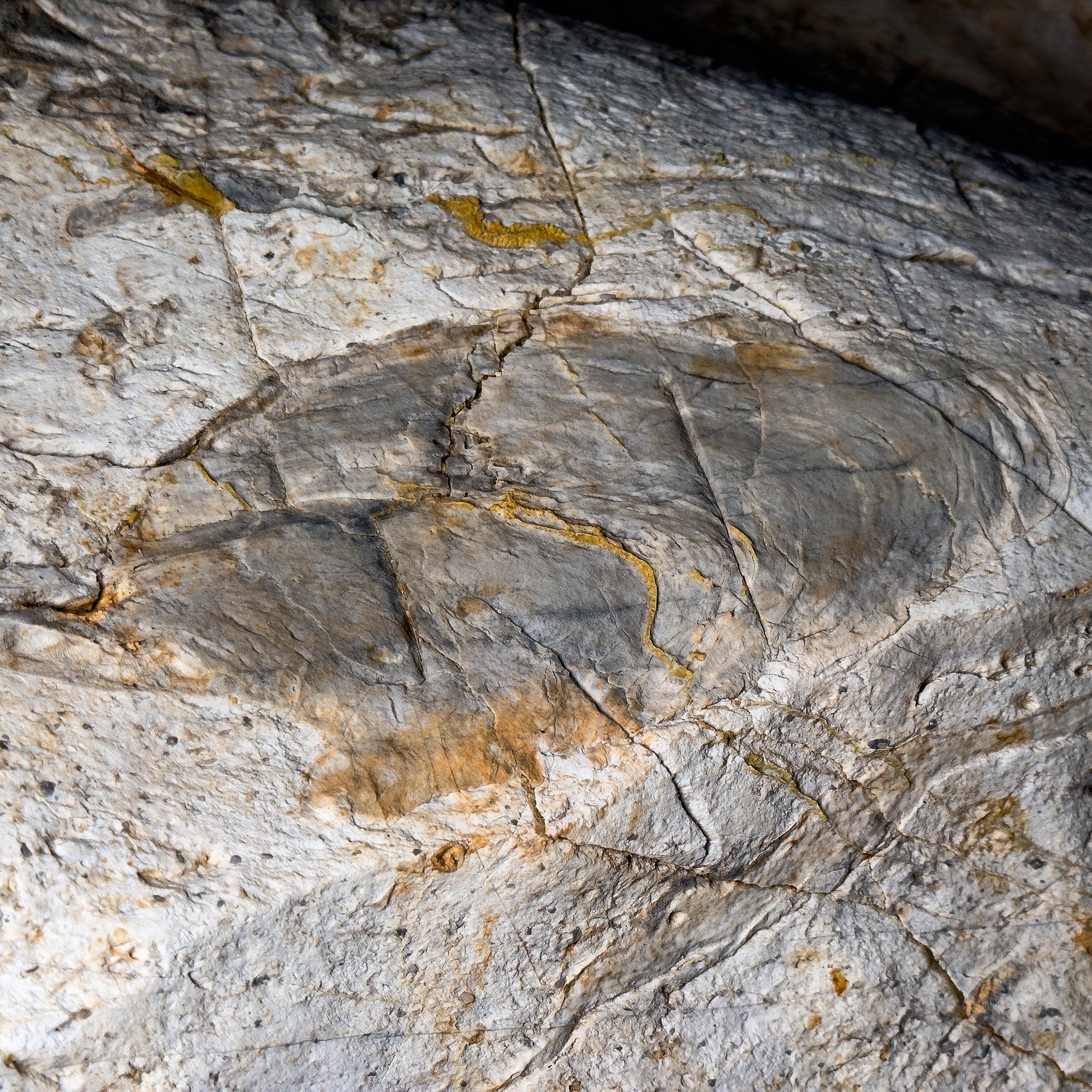
Geology of Jenolan
Formation of the limestone
The Jenolan Limestone was formed from vast numbers of marine organisms - seashells, corals and the like - whose shells were made of calcite (a form of the mineral calcium carbonate). As these organisms decomposed on the floor of a shallow sea, deep layers of limey, calcite-rich sediments built up. Over time and with immense pressure, this seabed was transformed into limestone, a sedimentary rock.
Our limestone formed around 430 million years ago, during the geological period known as the Silurian. The Jenolan Limestone has been interpreted as an offshore reef, with wave action destroying many of the shells and corals. However, well-preserved, identifiable fossils have been preserved where conditions in the ancient reef were calmer; the Temple of Baal and Chifley caves have especially good exposures. Brachiopods, gastropods, straight-shelled nautiloids, sponge-like stromatoporoids and corals have all been identified.
Several episodes of uplift, during a period called the Carboniferous, tilted the limestone to its present position. Once it reached this position, the caves as we know them would have started to form as mildly acidic river water and ground water began to penetrate and dissolve the rock, leaving the holes, voids and passages that we can explore today.
Click on photos to view further information
The limestone at Jenolan Caves formed around 430 million years ago, during the geological period known as the Silurian.
The karst landscape and formation of the cave
A karst landscape forms where surface water sinks into cracks in carbonate rocks like limestone, travelling underground rather than above ground. Caves and passages form in limestone when subterranean water picks up carbon dioxide (CO2) from the air and soil, making it slightly acidic and therefore capable of dissolving the rock.
The ancient Jenolan River may have started its long life over 200 million years ago, forming both the north side caves and McKeown’s Valley as it flows to what is now the Blue Lake. The river flows below ground at all times and above ground during floods, when it flows through the Devil’s Coach House to the Blue Lake.
Caves can form in many different ways, and Jenolan is lucky to have examples of several cave types. The north-side Imperial Cave is an active river cave. The far end of the Diamond Cave is a phreatic cave, once completely filled with water that slowly carved out the limestone. Horizontal layers (or joints) in the limestone can be undermined by water or other processes and can fall to the floor below; chambers that form this way are called breakdown chambers, like the Exhibition Chamber in the Lucas Cave. Dome caves, like the Persian Chamber in the Orient Cave, are thought to have formed when warm water rising from depth mixed with cooler water closer to the surface.
Click on photos to view further information
The ancient Jenolan River may have started its long life over 200 million years ago, forming both the north side caves and McKeown’s Valley as it flows to what is now the Blue Lake.
Speleothems
Speleothems, or cave crystal formations, are mineral deposits that precipitate out of groundwater or rainwater. Speleothems form as this mildly acidic water drips slowly into an open cave chamber or passage through cracks in the rock, dissolving the calcium carbonate out of the limestone, which may then reform as calcite ‘cave crystal’.
Speleothems can take many attractive and interesting forms, lending beauty and variety to the otherwise undecorated cave. Speleothems like stalagmites are also important scientifically, since stalagmites can be chronologically dated and contain important information about past environments.
Drips from the ceiling can form straws, stalactites, stalagmites and shawls, all of which add beauty and charm to the caves. Speleothems can be coloured gold, amber or red if the percolating waters pick up ‘impurities’ that add pigment to the water. in our caves, this is usually iron oxide, although tannins from trees above-ground are also an important source.
Click on photos to view further information




















